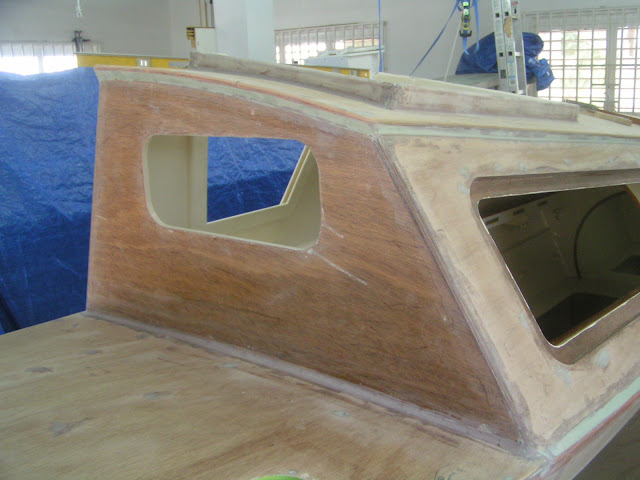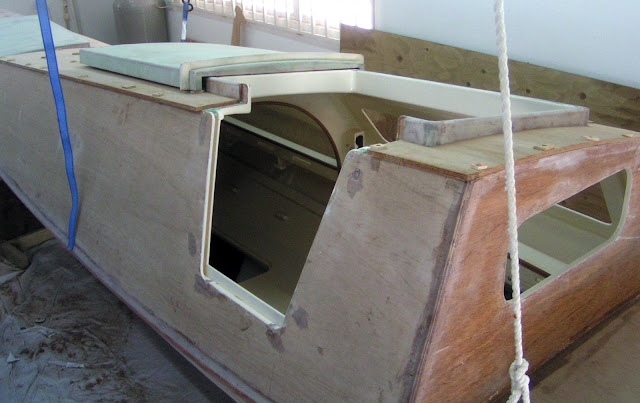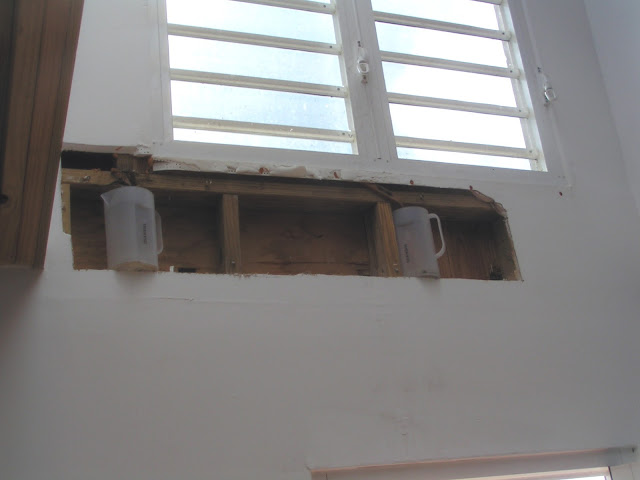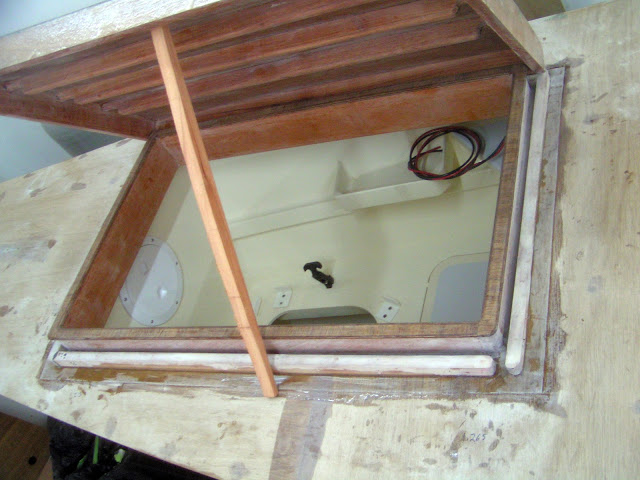I think most everyone will be happy to put the year 2020 in the rear view mirror. Belize had done so well in the early pandemic by holding the number of cases to 24 until this fall. Each day, 100 new cases are identified, as the case count continues climbing towards a peak. 2020 ends on hopeful notes with covid vaccines on the way bringing prospects for a return to normal life. All of this swirls around me leaving my existence unchanged as this day, like everyday, is a good day for more boat sanding.
I've been a bit limited in the work that can be done due to a lack of materials and hardware. The focus has been on completing a number of smaller tasks left languishing.
The washboard assembly has a coaming section that does not clear the fixed coaming when inserting the washboard assembly. This is because the washboard slope is different from the coaming slope. The solution is to cut the coaming section ends to a triangular shape matching the washboard slope thereby clearing the fixed coaming.
All surfaces exposed to water must be fiber glassed for protection. Above, areas adjacent to the washboard weep hole receive a fiber glass sheathing.
The 16 beam lashing pads receive fiberglass on all surfaces. Can you spot the one pad that has had the fiberglass trimmed, sanded and the mounting holes restored?
It is a common modification to add a cross beam to the stern. This beam will support the aft trampoline as well as a boarding ladder. Four additional lashing cleats were made for the aft beam.
The port hull has received fiberglass coverings on the decks and shear stringers. The hull is inverted to accept fiberglass spanning across the keel. This is the first of three layers of 6 oz. (per sq. yd.) fiberglass on the keel. This will be followed by two layers of 1708 (17 oz. per sq. yd.) on the keel. These layers will provide abrasion resistance to the hulls so that the boat may be beached without worry.
An odd low spot was discovered on the hull and corrected with green fairing compound and long board sanding.
Above the port hull is turned on its side so that lengths of fiberglass can be laid over to determine the amount needed to cover a hull side. Four lengths were cut for future installations.
I was excited to find the piano hinges and hatch prop rods in the latest shipment along with five gallons of epoxy. The head compartment above has the new hardware temporarily installed.
The piano hinge must be let into the lid to account for the closed thickness. My first efforts were on a router table that produced less than successful results as witnessed by the green filler shown above. Better results were produced with a handheld trim router working against a screwed on wooden fence.
Sail track slides were also received for the main hatches, but lumber was not available for this installation due to difficulties the rainy season imposed on logging.
Another shipment will arrive soon that will contain the 1708 fiberglass and other fiber glassing supplies that will assist with hull fiberglassment. There will not be much I can do until more materials and supplies arrive.


















































